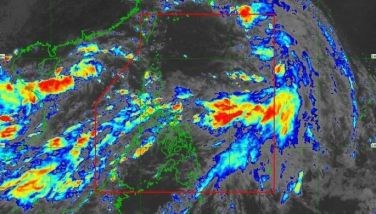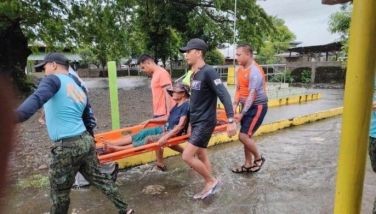EDITORIAL - Earthquake warning
The picture painted by a business risk consultancy was frightening. In case a Magnitude 7.2 earthquake struck Metro Manila, according to Pacific Strategies & Assessments, the nation’s premier region is so unprepared for coping with such a disaster that in the aftermath, Metro Manila would look more like Haiti’s capital Port-au-Prince than central Chile. Although the Haitian quake was weaker at Magnitude 7, the death toll was higher and the devastation far worse than the Magnitude 8.8 Chilean quake, mainly because Chile was better prepared for disaster.
PSA based its quake vulnerability assessment on a study conducted by the Japan International Cooperation Agency, Philippine Institute of Volcanology and Seismology and Metro Manila Development Authority. The original findings, released in 2004, were updated by PSA for its clients, which include private corporations and foreign diplomatic missions across Asia, following the earthquakes this year in Haiti and Chile. Experts have warned that countries along the so-called Ring of Fire, including the Philippines, are vulnerable to similar powerful earthquakes.
The study warned that in case of a Magnitude 7.2 quake in Metro Manila, tens of thousands of people would be killed immediately and more injured from collapsed structures and fires. Power and water supplies would be cut off, 100 kilometers of telecommunications cables would be cut with services disrupted for weeks, and emergency facilities such as hospitals and firehouses damaged. The airport would be shut down, nearly all roads would be disabled and up to nine bridges damaged. While Metro Manila is not at risk of a major tsunami, the study warned that a sea surge triggered by an offshore quake could still spawn significant flooding in the areas around Manila Bay and temporarily block the flow of water out of Pasig River, causing it to overflow and flood nearby communities.
Typhoons and torrential flooding in recent years have given residents of Metro Manila an idea of life in a disaster zone, and the government’s inadequate response. Some of the factors that have aggravated flooding will take time to remedy. But other disaster mitigation measures can be implemented in the near future, such as the preparation of more evacuation centers and improvement of flood warning systems.
In the case of earthquakes, buildings and infrastructure can be inspected for structural weaknesses and compliance with fire safety standards. Operators of public utilities must have teams and procedures in place for emergencies. Health workers must also be prepared, and the government must be able to prevent any substantial disruption in the transport of basic items such as food and fuel. When disaster strikes, preparedness will spell the difference between chaos and a quick recovery.
- Latest
- Trending




























